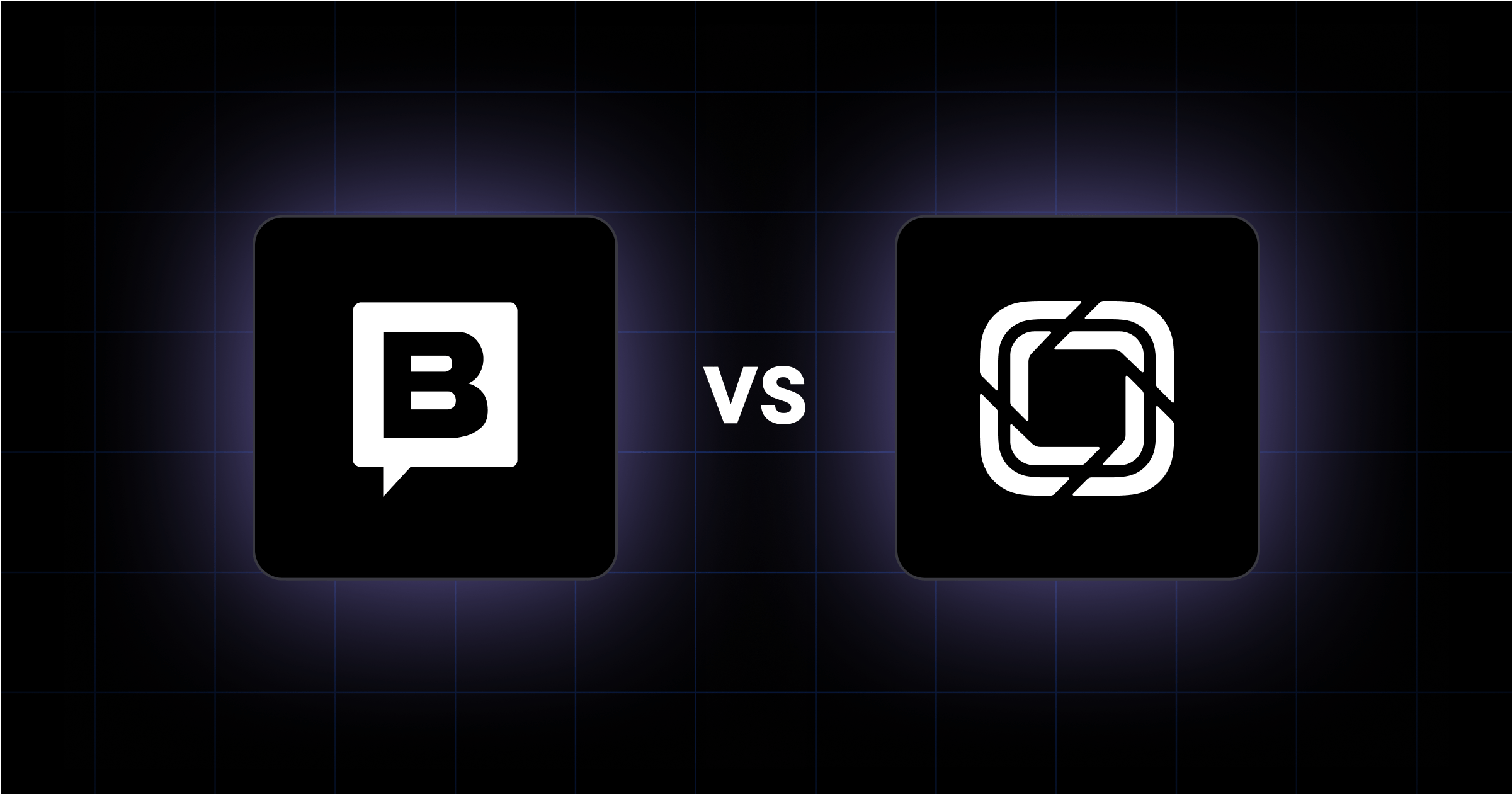Most website redesign projects start with good intentions and aesthetic ambitions: a fresher look, a better homepage, maybe a sleeker navigation bar.
But for growth-stage B2B companies, surface-level changes won’t move the needle when it comes to publishing speed or scalability.
To understand what your website really needs, it helps to ask the right stakeholder questions for your website redesign project.
This article walks you through the most important stakeholder questions to ask before your website redesign. So it can deliver business outcomes such as:
- Shorter time to launch and iterate
- Greater independence for your marketing team
- Improved SEO and site performance
- Scalable content systems that grow with your organization
If your team is planning a redesign, this guide will help you align internal stakeholders, uncover real needs, and set a foundation for a site that works harder, from day one.

1. What Are Our Business Objectives for This Redesign?
Before diving into design mockups, your team needs to define success and set a redesign project plan.
What outcomes should this redesign drive, not just for your website, but for your business?
For example, the goal might be to:
- Accelerate lead generation by improving conversion paths and user flows.
- Empower marketing teams with the ability to publish content faster and launch campaigns without dev reliance.
- Reflect your GTM evolution by aligning site architecture with a changing product line or new audience segments.
- Boost SEO performance with faster load times, improved structure, and mobile responsiveness.
- Reduce engineering overhead by implementing systems marketers can manage independently.
2. Who Are the Key Stakeholders and What Are Their Priorities?
A website redesign doesn’t happen in a vacuum. It involves multiple teams, each with different priorities, workflows, and expectations.
One of the biggest risks in any redesign is misalignment across stakeholders. It leads to scope creep, slow approvals, or a final product that serves no one well.
Identify the core decision-makers and contributors early on.
You’ll typically see involvement from marketing leadership, product teams, design and brand, engineering, and RevOps.
For example, our client Privy redesigned their website with their marketing and sales team in mind.
Note that you don’t need every stakeholder to agree on everything.
But you do need to understand what each one values, and map how the new site can support their goals without sacrificing velocity.
3. What’s Broken Today and What’s the Cost of Not Fixing It?
Before solving problems with a redesign, you need to name them. Stakeholders often know the site is underperforming, but haven’t quantified why or how that impacts the business.
Start with a performance audit and diagnose current issues across key dimensions.
Answer questions such as:
- Is your site slow to load or failing Core Web Vitals?
- Does marketing depend on developers for basic updates?
- Are CTAs buried, or is navigation unclear for buyers?
- Can your CMS scale with your team’s content needs?
- Does your UX reflect your product and GTM strategy?
This is about identifying operational debt, not just bad design. The goal is to paint a clear picture of how your current site is holding your team back.
For example, a SaaS company might have a great-looking site. But it takes 5+ seconds to load on mobile and requires dev support for every update. Their blog traffic is high, but so are the bounce rates, while conversions are low.
4. How Flexible Do We Need the New Site to Be?
Flexibility is a necessity for high-growth B2B teams. Ask stakeholders: What’s holding your team back today, and what kind of agility will we need tomorrow?
If your marketing team can’t launch a landing page without looping in engineering, or if every site update requires a Jira ticket, your website is a bottleneck.
Composable architecture and headless CMS platforms give you the freedom to build what you need, when you need it. From modular page creation to reusable components and governed workflows, flexibility translates to speed and scale.
5. Are We Replatforming, Rebranding, or Both?
Not all redesigns are the same. Some are driven by brand evolution or visual identity. Others are focused on performance improvements and platform upgrades. Often, it’s both, and that demands tight stakeholder coordination.
If you’re moving from WordPress or Webflow to a headless CMS like Contentful or Sanity, be prepared for new workflows, structured content models, and a more flexible but more complex architecture.
If you’re rebranding, it’s not just about aesthetics. Messaging, site structure, and page hierarchy may all need to shift.
The bottom line is: Replatforming/rebranding without rethinking content strategy or modernizing infrastructure can leave your redesign half-baked.

6. How Will This Redesign Support Our SEO and Performance Goals?
A website that looks polished but can’t be found or takes too long to load won’t drive inbound results. For B2B brands investing heavily in content marketing, SEO and performance are non-negotiable.
These conversations need to happen early in the redesign process, not after launch when fixes become expensive. Start by asking:
- Are we building for Core Web Vitals from the ground up?
- Is the site architecture structured for easy crawling and indexing by search engines?
- Can our content team manage metadata, URLs, and SEO elements independently?
- Are we using modern frameworks and hosting solutions that optimize site speed globally?
A technical SEO audit before redesign can uncover structural issues like poor internal linking, duplicate content, or underperforming page speeds. All of which should be addressed during the rebuild.
For example, picture a Series C SaaS company that scaled content production aggressively but never saw the organic traffic they expected.
Their website had a rigid CMS that limited SEO flexibility, a bloated codebase that slowed down load times, and a disorganized blog structure that made it hard for search engines to understand content hierarchy.
In their redesign, they moved to a headless CMS with modular content models. They rebuilt their frontend with Next.js and deployed on a high-performance hosting platform like Vercel. This setup allowed the marketing team to manage SEO elements while improving site speed and crawlability.
7. What Role Will Data and Analytics Play in the New Site?
A website redesign should improve how you measure and optimize performance. That means clear tracking, accurate attribution, and the ability to experiment and learn from user behavior.
Start by asking the right questions early in the process:
- What key actions do we need to track? (e.g., demo requests, resource downloads, product page engagement)
- Are we capturing the full user journey, from first touch to closed deal?
- How will our growth, marketing, and RevOps teams use this data to improve campaigns?
- Does our CMS and analytics stack (GA4, HubSpot, Segment, etc.) support granular tracking and scalable reporting?
If your analytics setup doesn’t align with your go-to-market motion, you risk missing insights.
Let’s use an AI company as an example. They’re preparing for expansion. Their old website lacked clear tracking, and marketing struggled to attribute leads to specific campaigns. Conversions were happening but no one could confidently say where they came from or which content influenced the pipeline.
During their redesign, they rebuilt their analytics stack with event-based tracking, aligned their CMS with platforms like HubSpot and GA4, and created custom dashboards to monitor key conversion paths.
Within weeks of launching the new site, the growth team was able to run targeted funnel experiments and tie marketing efforts directly to revenue outcomes.
8. What’s Our MVP and How Do We Prioritize It?
Trying to do everything at once leads to bloated timelines, burnt-out teams, and missed windows. Launching an MVP—the smallest version of your new site that delivers value—is how you go live fast and build from there.
Ask stakeholders: Which pages matter most? What’s critical for launch vs. what can wait? Can your redesign ship in sprints instead of all at once?
9. How Will We Handle Content Migration and Governance?
Redesigning is one thing, migrating years of content is another. Without a migration strategy, you risk broken links, lost SEO, and bloated backend systems.
Audit your existing content. Decide what stays, what’s archived, and what needs rewriting. Plan redirects and SEO preservation. And if you’re replatforming, build a structured content model that enables approval flows, localization, and scalable publishing.
10. What Happens After Launch?
Launch day is only the start of continuous iteration. Plan ahead: who owns the site? What’s your sprint cadence? How will you track performance and optimize?
Ask your stakeholders: Are we resourced to keep improving? Do we have a roadmap for experiments, A/B testing, and content expansion? What does success look like 30, 60, and 90 days post-launch?
Ready to Redesign With Stakeholder Buy-In and Business Impact?
A website redesign is your chance to future-proof your digital presence and finally remove the bottlenecks slowing your team down. But to get there, you need more than clean design and trendy UX. You need strategic alignment, modular systems, and a partner who knows how to turn stakeholder input into real outcomes.
Webstacks can help you develop the right redesign approach for your business goals, team structure, and growth stage.




